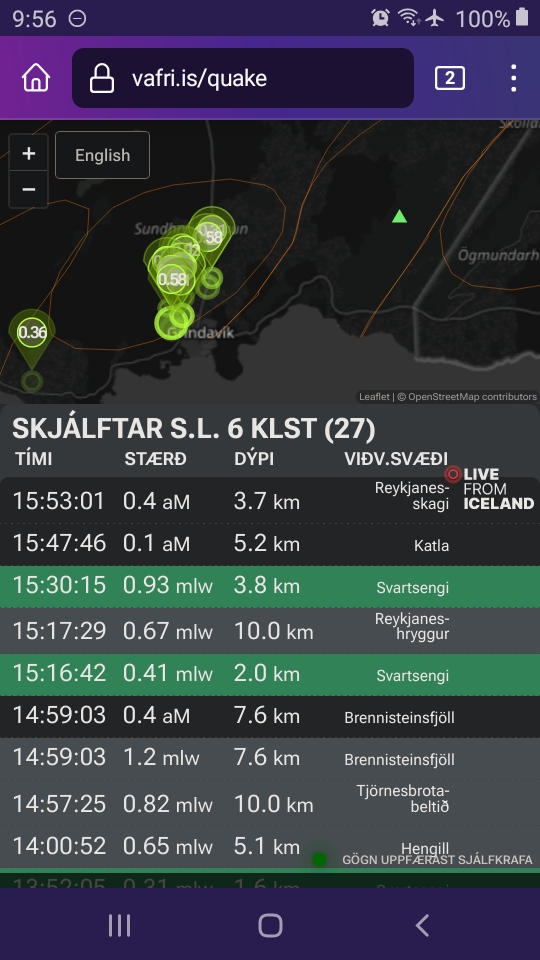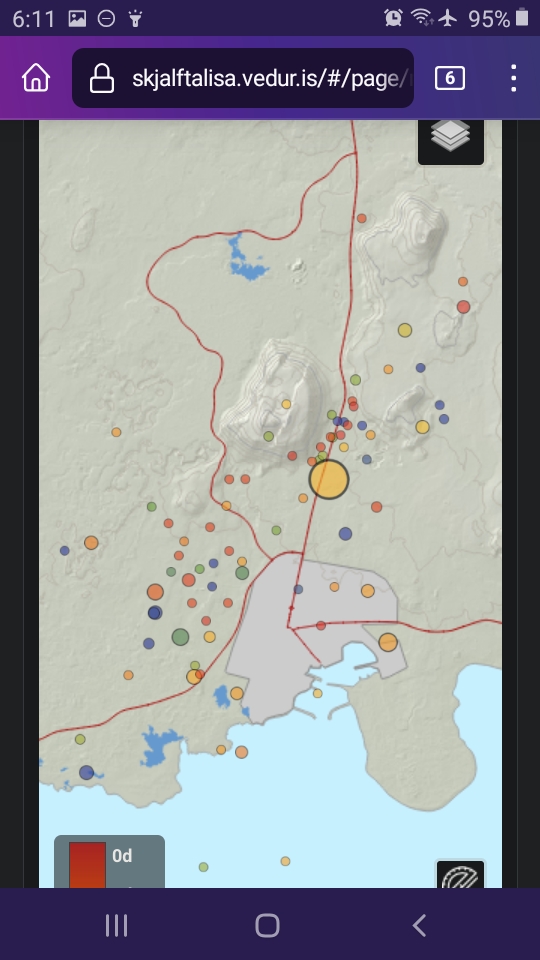Per this
article (autotranslated), there definitely is more magma down there and something must give sooner or later.
<
Layperson speculation> The boffins also point out that more quakes are recorded now that the weather has cleared, but since it didn't suddenly worsen again on the cam views yesterday to again obscure the graphics data, that probably was a swarm -- one of several at the dike that volcanologists have occasionally mentioned in interviews.
But I was wrong about energy coming in, as this
IMO graphic (Icelandic) shows:
That larger circle is the Thorbjorn M2.8. Ordinarily aftershocks occur after such a larger than usual temblor -- but I don't see any here.
As mentioned in Birkir's tweet earlier in this thread, you can't see the formerly clear-cut outline of the dike on a seismicity map (even factoring in the data lost because of recent bad weather, since Birkir looked at it before those storms).
There certainly must be built-up pressure down there (and constantly growing, as inflow under Svartsengi continues per the article linked above)), but what I see in these little quakes on that IMO graphic is a failure of that pressure to find something in the crust to focus on, cut through, and escape by erupting.
In other words, although the whole peninsula surface cracked when, in the words of
Volcano Cafe, "On 10 November 2023, the plate boundary snapped into a massive dike, some 18 km long. The sides of the dike rebounded, unleashing their pent-up strain from the plates pulling apart over two millennia and at the same time the ground above the dike sunk, undermined by the extension of the earth...", those cracks did not extend very far down into the ridge (on a geologic scale, of course: some
are hundreds of feet or more deep -- sadly, deep enough to swallow a man).
And when you look at the magnitude of that November 10th plate-tectonic event, it really isn't surprising to see such lack of oomph in its wake (highly technical jargon there ;^) for what must be very complex geophysics and geochemistry that the boffins probably work through daily).
Not being a boffin, this layperson is free to cut loose and wildly speculate that the energy one ordinarily would expect to be released vertically when overburden is suddenly released above a magmatic system is not yet bigger than (this is totally my speculation, not backed by any authority) the horizontal energy being expended as Iceland east of the peninsula (or at least east of Lake Kleifervatn) and the Mid-Atlantic Ridge southwest of the peninsula adjust to that sudden plate separation on November 10th.
It may take a while. After all, in this part of the world continental plates
usually move on average about as fast as human fingernails grow. Another factor is probably the lack of subduction zones east or west of Iceland; both North America and Eurasia have
passive margins at these latitudes. And, of course, the mantle plume apparently centered under Bardarbunga is a big honkin' factor that I'm going to blithely ignore, too.</
layperson speculation>
It's still a waiting game, but in a very unusual situation. Given the serious consequences for Icelanders thus far from what were really very small, brief eruptive episodes, one can only hope for more tourism-friendly activity out in the boonies again.
And wait.
And look forward to the blizzard of scientific papers that is likely to begin some six months to a year from now.
Meanwhile,
in Iceland (autotranslated)...

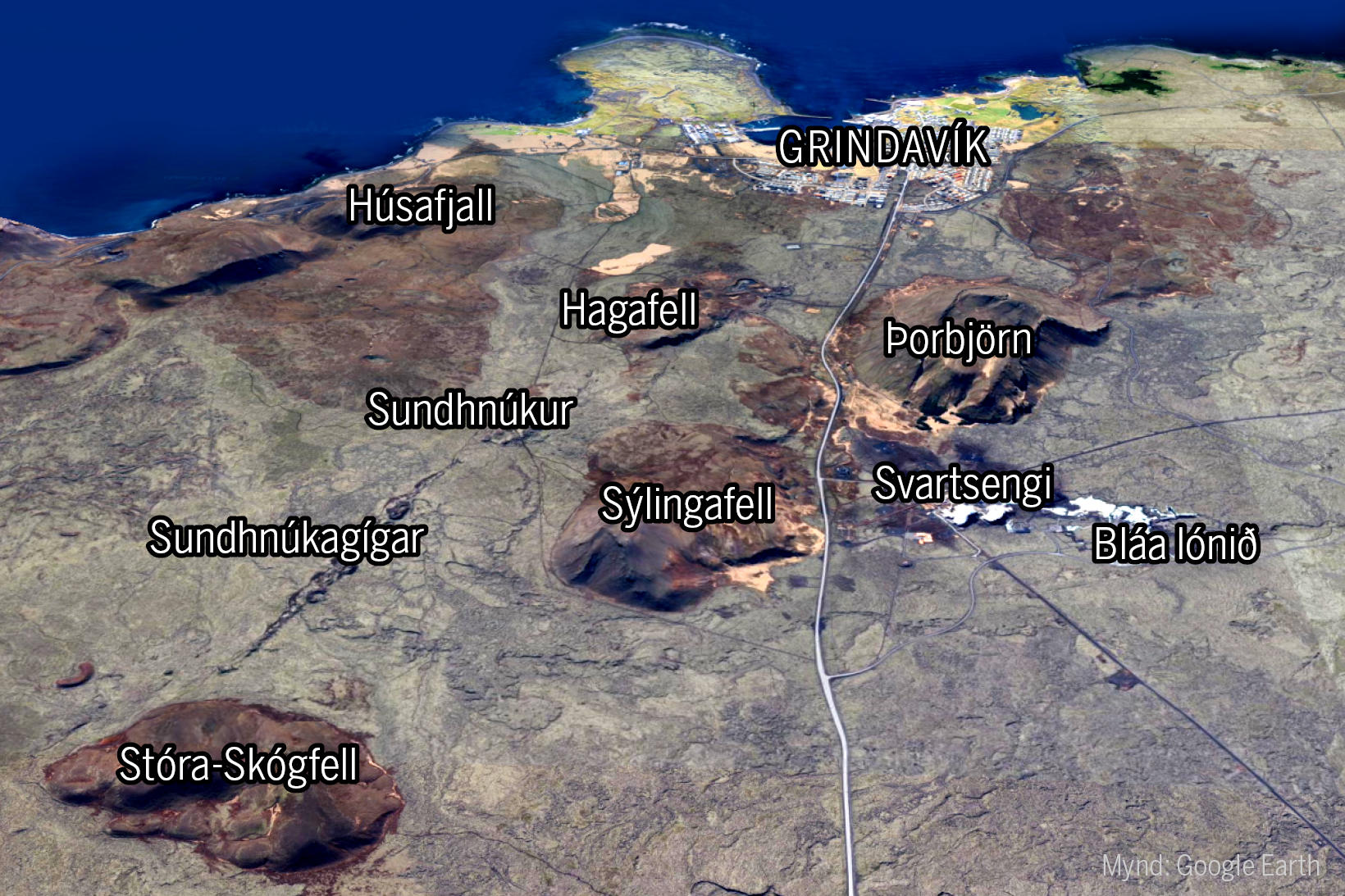
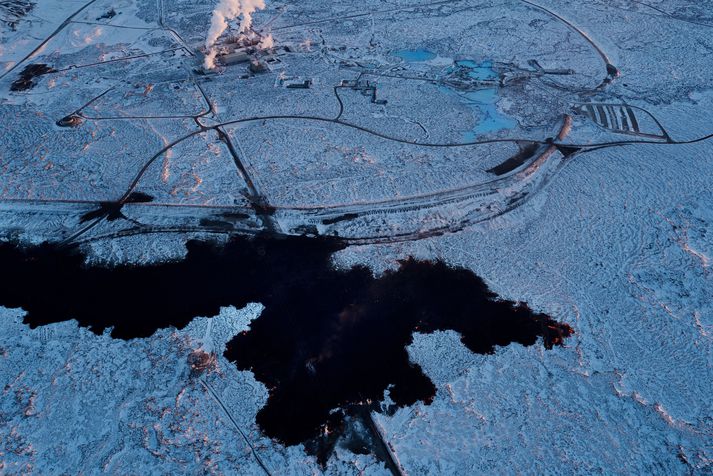
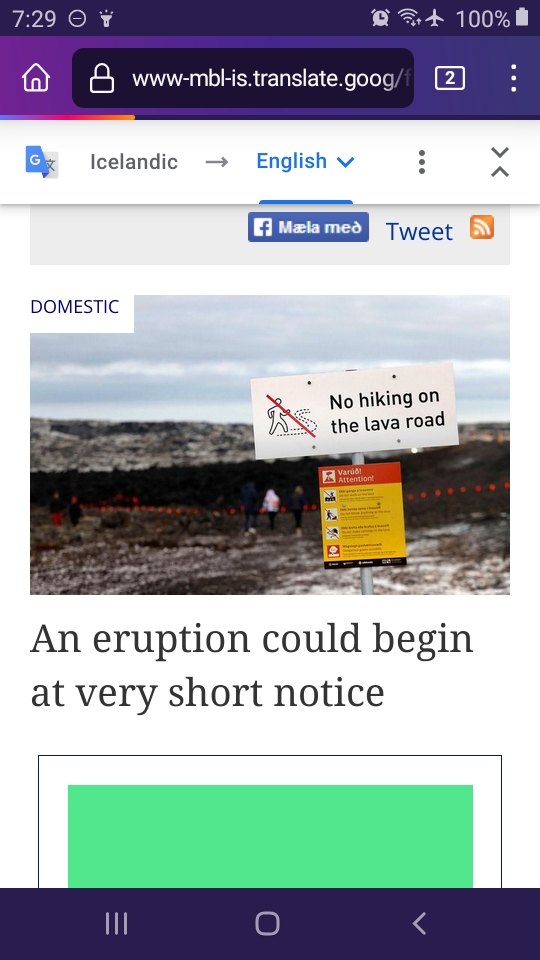
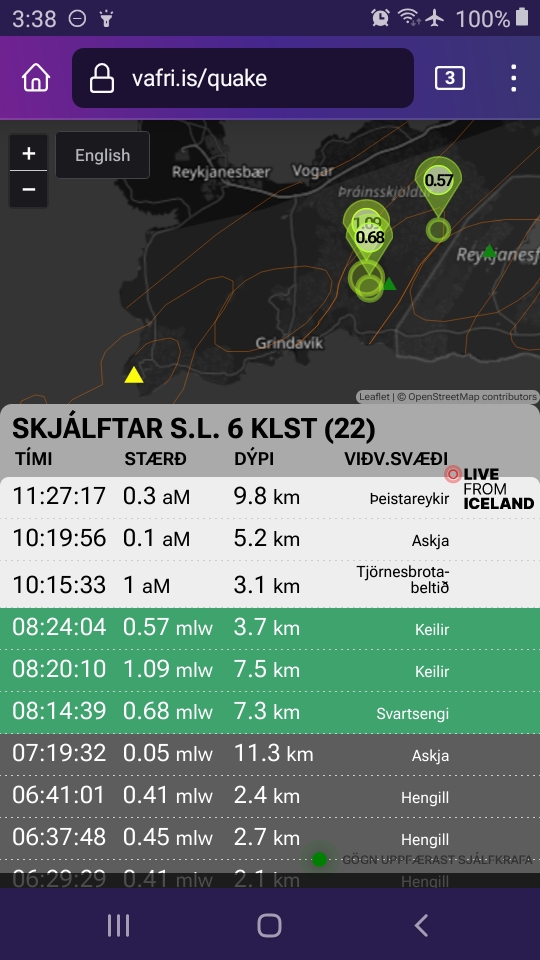




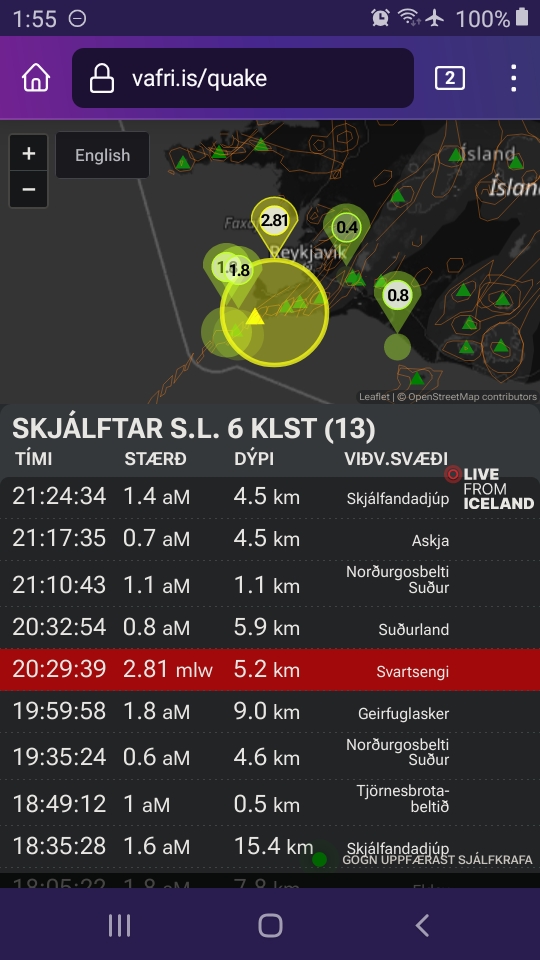
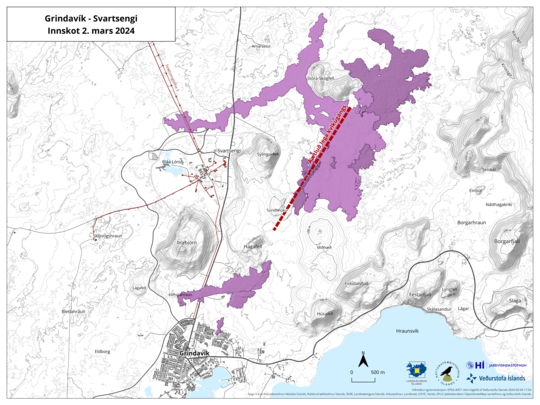
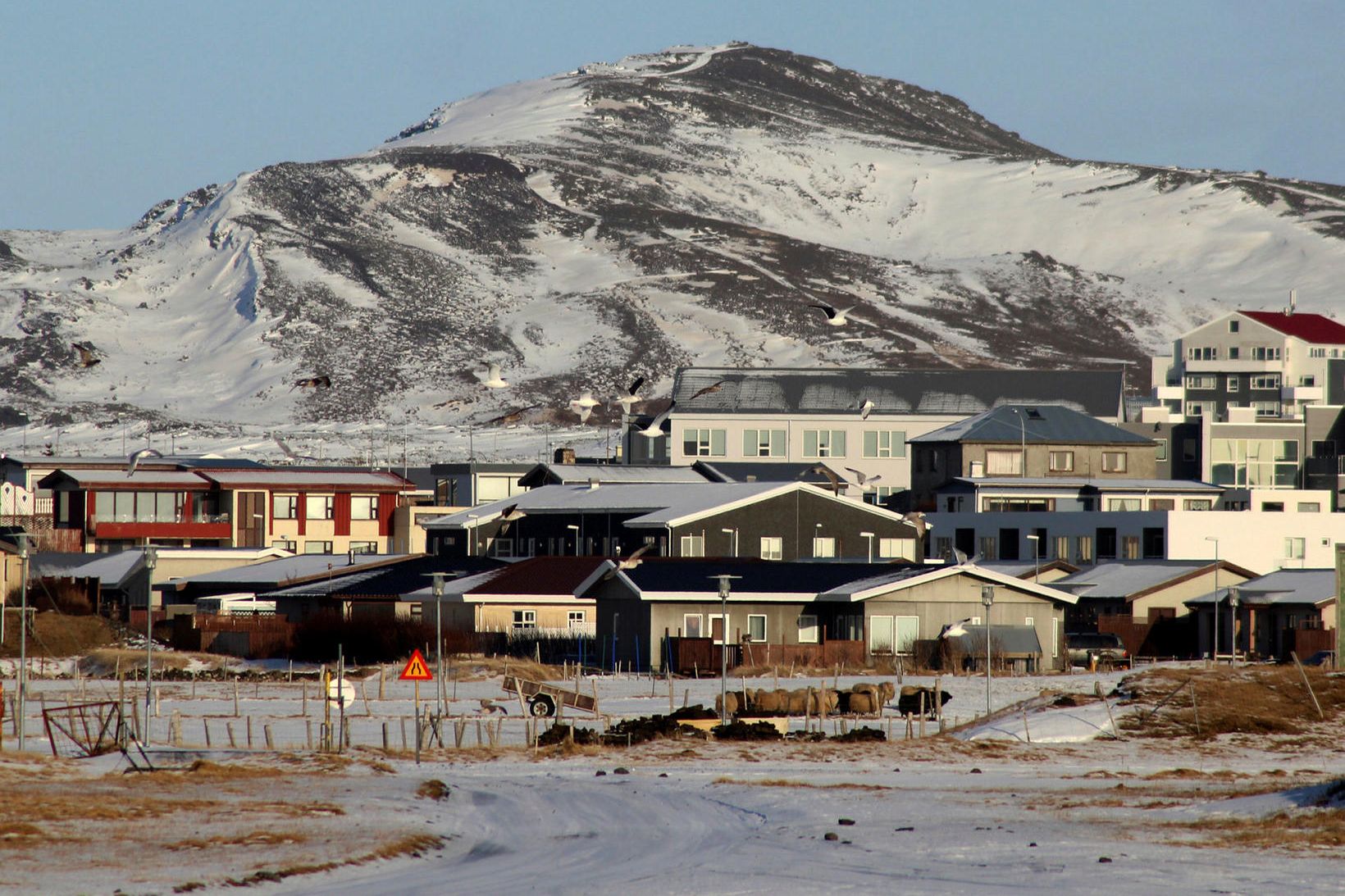
/frimg/1/46/46/1464608.jpg)
